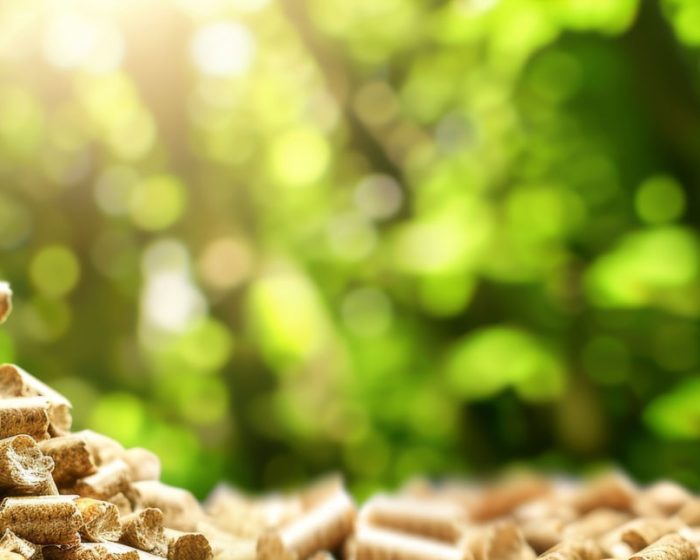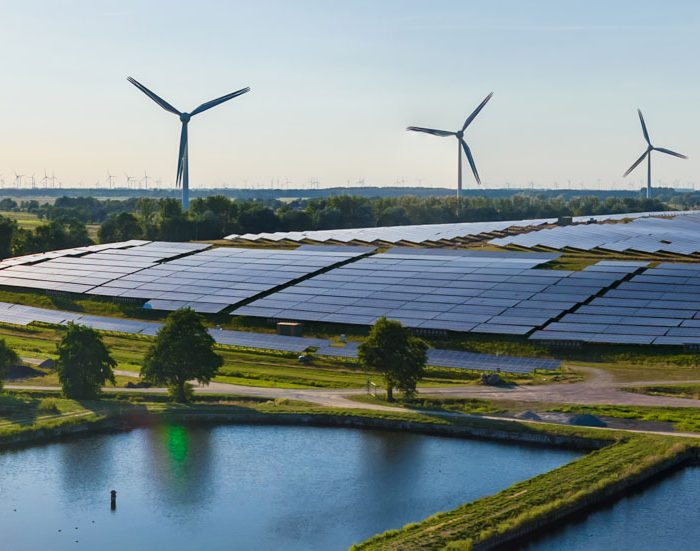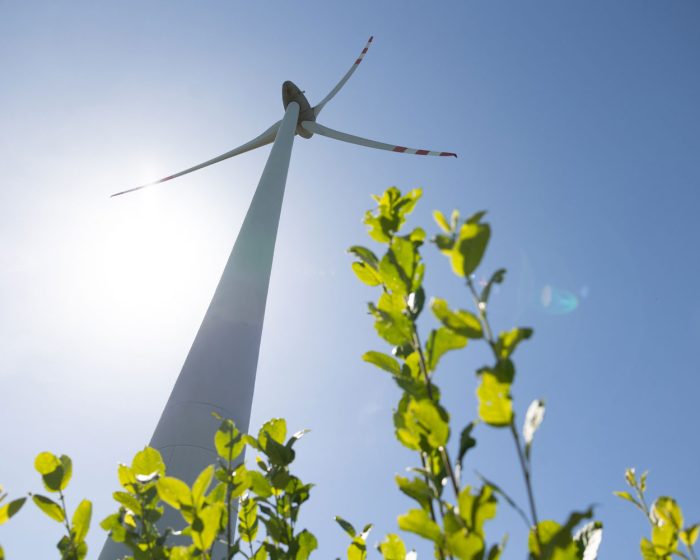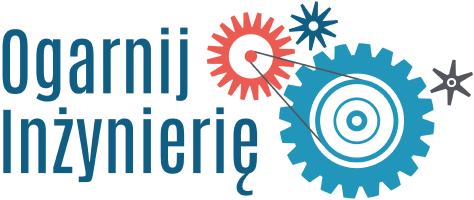Water and heat from within the earth: the key to cheap and stable energy
Many renewable energy sources are dependent on unpredictable external factors such as weather or simply generate less energy due to changing seasons. Therefore, to ensure a sustainable energy mix, it needs to be reinforced with more predictable sources such as hydropower and geothermal energy.
How does hydropower work?
Hydropower is one of the oldest and most reliable forms of renewable energy, and has been known to mankind for centuries. Before there was electricity, water turbines powered mills that ground grain into flour. Modern run-of-river power plants operate on a similar principle. Water flows down the natural course of a river, driving the turbines and generating electricity. They can be compared to a mill wheel that produces electricity instead of flour.
Another interesting solution are tidal power plants, which take advantage of the regular tides of the seas. Their operation is based on the movement of water, which flows through turbines to generate electricity – you can imagine this as the breath of the ocean driving giant windmills submerged in the water. The predictability of these phenomena makes tidal power plants a stable source of energy. What’s more, their design often has the added function of protecting coastlines from erosion.
The most recognisable types of hydroelectric power plants, however, are the impoundment and pumped-storage facilities.
Impoundment hydropower plants
In impoundment facilities, water is stored in an artificial reservoir by means of a dam. The water level is raised, increasing the potential energy that is released when the water flows through the turbines. The higher the dam, the more energy can be generated. Examples include the legendary Hoover Dam in the United States or the Three Gorges Dam in China – the largest hydroelectric power station in the world, which produces as much as 22.5 gigawatts of energy per hour at full capacity. That much energy would be enough to power a small town such as Szczyrk or Hel for a year.
Pumped storage power plants
Pumped storage facilities act as large ‘batteries’ for the energy system. They consist of two water reservoirs – an upper and a lower one. Excess energy, such as from wind or solar power plants, is used to pump water into the upper reservoir. When the demand for energy increases, the water is released and turbines generate electricity. Such a system allows efficient energy storage and reduction of losses and returns up to 80% of the energy originally used for pumping.
In Poland, the largest power station of this type is the Hydroelectric Power Plant in Żarnowiec. At full capacity, it can produce 716 MWh of energy per hour, which would be enough to power around 240 households for a year. Żarnowiec also acts as a strategic energy store, supporting the stability of the energy system at times of peak demand.
Hydropower is therefore not only about power generation, but also about solutions that support environmental protection, energy stability and sustainability. Thanks to the diversity of power plant types, water remains one of the most versatile sources of renewable energy.
How does geothermal energy work?
Geothermal energy uses the heat of the earth’s interior to provide heating and electricity. The basis of how the system works is quite simple.
In the case of the power plant, two boreholes are drilled into the deep groundwater to begin with and pipes are installed to bring the hot water under pressure to the turbines. When the water gets there and its flow slows down, it partially evaporates, driving the turbines, and is then discharged back into the ground through a second pipe. Newer systems do not just rely on steam, but use liquids that evaporate faster than water to drive the turbines after the water heats them up. This modern solution makes it possible to exploit the potential of geothermal energy even better.
For heat production, the process is even simpler. In this case, except in places where there is a lot of geothermal activity (e.g. Iceland), the most common model is to use heat pumps familiar to many of you.
Heat pumps use the temperature of the ground to heat homes in winter and cool down in summer, maintaining a stable temperature. Water flows through the ground in a closed circuit powered by the pump. At a depth of around 6 metres, the ground temperature remains almost constant throughout the year and corresponds to the average annual air temperature in the region. In Poland, this is around 8-10°C. It can be said that the ground at this depth retains a climate ‘memory’ and acts as a natural vacuum flask: it is cooler than the surface in summer and warmer in winter, making it the ideal medium for heat exchange in heat pump systems.
If the house is colder than the ground, water heated in the ground flows through the pipes and heats the building. The cooled water then returns to the ground where it heats up again … and the cycle repeats.
If the ground is colder than the house, this works in reverse. The cold water flows through the house, cooling it, and the heated water returns to the ground where it is cooled. In this way much less energy is used than in alternative methods, as the energy required to pump the water is much less than the energy required to heat it, or cool the house. This means that if we power the pump by using photovoltaic panels, we can create a home that would be virtually energy self-sufficient.
Benefits of hydro and geothermal energy
Hydropower and geothermal power mostly provide electricity regardless of weather conditions, unlike wind or solar power. In addition, they are much more long-lived, which lowers their carbon footprint.
Of course, these are not ideal solutions. Hydropower plants, in particular, require a lot of resources and land to produce energy on a large scale and are vulnerable to dangers in the event of flooding and to drops in output in the event of drought. Nevertheless, extreme weather events are much less frequent than simple cloud cover or lack of wind, so hydroelectric plants remain a much more stable source of energy.
Hydro and geothermal energy in practice
In fact, both technologies have already found widespread use. A fantastic example of this is Norway, whose energy mix is made up of 89% hydropower. Interestingly, Norway started working on hydropower as early as … in 1892. By developing new technologies and exploiting the countries topography full of rivers flowing in deep valleys, the Norwegians have built an extremely stable and unusual energy mix.
Norway is not the only Nordic country to benefit from its geography. Iceland, descendants of the Vikings, power their country with 70% hydropower and the remaining 30% comes from geothermal energy. With stable and renewable energy sources, the countries boasts some of the cheapest energy in Europe, both in terms of production costs and availability to the population. Thanks to their focus on stable renewable energy sources, these countries have the least expensive energy relative to earnings in the whole of Europe!
Against this background, Poland comes out much more modestly. Hydropower accounts for about 1.5% of national electricity production. This is mainly due to geographical conditions. Poland does not have large rivers with a significant gradient that would allow the construction of large hydroelectric power plants. Most of the existing power plants are smaller run-of-river facilities and pumped storage power plants, such as the Żarnowiec Power Plant, which also acts as a strategic energy storage facility.
In contrast, geothermal energy in Poland is mainly used for heating purposes, for example in the Podhalańska Geotermia, which supplies heat to local communities. In electricity production, the role of geothermal is marginal, mainly due to the lack of natural hot springs with adequate parameters. Nevertheless, in recent years, more and more Poles have been investing in domestic heat pumps – an affordable, ecological and low-cost solution that is becoming increasingly popular thanks to the support of government programmes.
Although Poland still has a lot of catching up to do compared to Norway or Iceland, the gradual development of renewable technologies offers hope for a more sustainable energy future. Who knows, perhaps in the future Polish geothermal and hydropower will play a greater role in our energy mix?
Hydropower and geothermal energy are unique RES due to their simplicity, stability and longevity. Not only do they allow us to generate electricity, but they also help with the storage of excess energy from other sources and heat our homes. With the advancements in technology, their share in our energy mix is likely to be growing, so it is worth investing in them now.
Read also

Biomass: energy hidden in everyday waste
Biomass is a natural treasure hidden in our everyday surrounding – organic matter that comes from plants, animals and their waste that we can convert into energy. Imagine wood, plant leftovers or even waste from your kitchen being turned into heat, electricity or fuel for cars instead of being wasted. This is nature’s ecological response […]

What is renewable energy?
The best way to explain renewable energy is to start with a definition of non-renewable energy. Since the industrial revolution, humans have relied primarily on non-renewable energy sources. First there was coal, then came oil and gas. The problem with these resources is that access to them has been limited and using them to produce […]

The economic secrets of RES. What does renewable energy do to our wallets?
Renewable energy sources are a relatively new part of our energy reality and as a result, many myths have grown up around them. In this article, we will take a look at the most commonly asked questions and economic concerns about RES. We will explain their causes and show the costs and benefits of renewables […]




